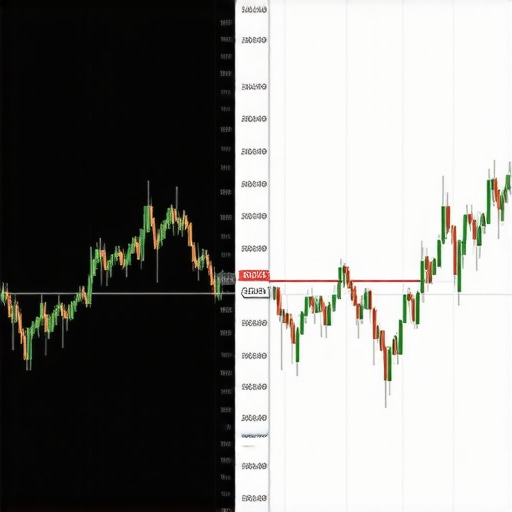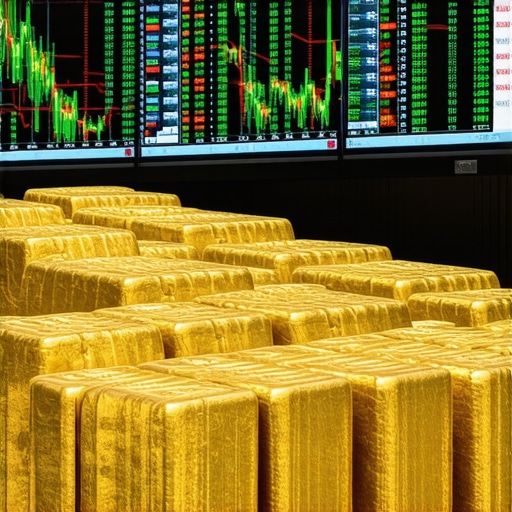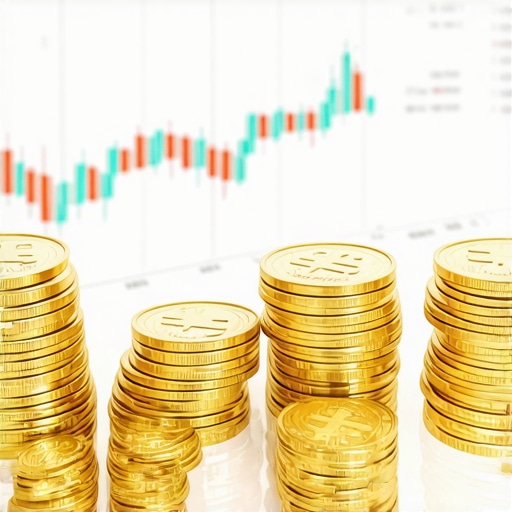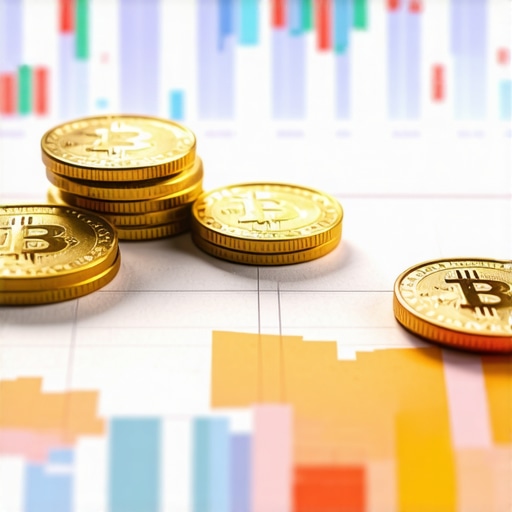Understanding the Strategic Role of Central Bank Gold Purchases in Shaping 2025 Gold Market Trends
As financial markets evolve amidst geopolitical uncertainties and macroeconomic shifts, central banks’ gold acquisition strategies emerge as pivotal in influencing global gold prices. This comprehensive analysis explores how the increasing or decreasing gold reserves held by central banks will impact market sentiment, price stability, and investment strategies in 2025. Leveraging insights from latest market reports and authoritative sources such as the IMF white paper, we analyze the nuanced interplay between monetary policy and gold demand.
Deciphering the Motivations Behind Central Bank Gold Accumulation
Central banks’ motives to increase gold holdings often hinge on geopolitical stability, diversification of reserves, and hedging against fiat currency devaluation. Conversely, reductions in gold reserves may reflect strategic shifts towards more liquid assets or responses to specific economic conditions. Understanding these motives requires a deep dive into macroeconomic indicators, currency stability, and international reserves management, which collectively influence the supply-demand equilibrium for gold in 2025.
How Will Central Bank Gold Buying Trends Influence Gold Pricing in 2025?
Market analysts forecast that sustained or accelerated gold purchases by central banks could underpin a bullish trend in gold prices, especially if driven by geopolitical tensions or inflationary pressures. Conversely, a decline in central bank gold reserves might signal a shift towards other asset classes, potentially exerting a bearish influence. The key lies in the timing, scale, and geopolitical context of these acquisitions, which could lead to volatility and new price discovery mechanisms in the gold market.
Could Central Bank Gold Purchases Signal a Fundamental Price Shift in 2025?
This question probes the core of market speculation. Historically, large-scale central bank gold buying has preceded significant price uptrends, but it can also be a response to existing market conditions rather than a causal factor. The interplay of global economic stability, inflation expectations, and monetary policies will determine whether these purchases herald a structural price shift or remain a tactical reserve management decision.
Investors seeking to navigate this complex landscape should consider diversifying their portfolios with gold-related assets, such as gold ETFs and mutual funds, which offer liquidity and exposure to price movements driven by central bank activities.
For those interested in developing an expert-level gold investment strategy that accounts for the influence of central bank actions, exploring our long-term portfolio development guide is highly recommended.
Decoding the Complex Relationship Between Central Bank Gold Reserves and 2025 Market Trends
As the global economy faces ongoing uncertainties, the strategic decisions made by central banks regarding gold reserves are increasingly influential in shaping market sentiment and price trajectories. These institutions, acting as key players in the gold ecosystem, adjust their holdings based on geopolitical risks, currency stability, and macroeconomic forecasts. Understanding these motives is crucial for investors aiming to anticipate potential market shifts in 2025. For instance, a surge in gold purchases by central banks often signals a hedge against inflation and currency devaluation, which can lead to bullish trends in gold prices. Conversely, reductions in reserves might reflect confidence in alternative assets or a shift in monetary policy, potentially exerting downward pressure on prices. Monitoring the latest reports from credible sources like the IMF white paper can provide valuable insights into these evolving strategies and their implications for 2025 market conditions.
How Will Central Bank Actions Shape Gold Price Volatility in 2025?
Market analysts suggest that sustained or accelerated gold purchases by central banks could underpin a bullish trend, especially amid geopolitical tensions or inflationary pressures. Conversely, a strategic move to reduce gold holdings might signal a shift towards other assets, possibly leading to increased volatility. The timing, scale, and geopolitical context of these transactions are critical factors influencing market dynamics. Investors should consider diversifying their holdings with instruments like gold ETFs and mutual funds that can offer liquidity and exposure to price movements driven by central bank activities. Recognizing the nuanced effects of these policies enables more informed decision-making, particularly when developing a resilient investment strategy for 2025.
Could Central Bank Gold Purchases Be a Leading Indicator of Structural Price Changes in 2025?
This question challenges investors to consider the broader implications of central bank behaviors. Historically, significant gold acquisitions by these institutions have preceded notable price increases, yet they can also be reactive rather than predictive. The interplay between global economic stability, inflation expectations, and monetary policy responses will ultimately determine whether these purchases signal a fundamental shift or merely tactical reserve adjustments. For investors seeking sophisticated insights, examining expert analyses such as the 2025 gold price forecasts can help contextualize these dynamics within a comprehensive market outlook. Developing a nuanced understanding of these signals is vital for crafting strategies that can capitalize on or hedge against anticipated trends.
If you’re eager to deepen your knowledge, consider exploring our detailed guides on building a long-term gold portfolio or diversifying with top gold ETFs for 2025. Staying ahead of these macro shifts can significantly enhance your investment resilience and growth potential in the evolving gold market landscape.
Emerging Paradigms: How Central Bank Gold Reserves Are Reshaping 2025 Market Dynamics
As we delve deeper into the intricate relationship between central banks and gold, it becomes increasingly clear that their strategic reserve adjustments are not merely reactive measures but proactive signals shaping market expectations. For instance, recent data from the IMF white paper indicates a nuanced shift towards diversification that could herald significant price movements. This evolving landscape necessitates a sophisticated understanding of macroeconomic indicators, geopolitical risk assessments, and monetary policy implications that influence these reserve decisions.
Particularly, the strategic accumulation of gold by emerging economies such as China and India signifies a potential shift in the global reserve currency paradigm, challenging the dominance of the US dollar and impacting gold’s pricing mechanisms. These shifts, often overlooked by mainstream analysis, are critical for investors aiming to anticipate market trajectories and position their portfolios accordingly.
What Are the Key Indicators Signaling a Structural Price Shift in Gold for 2025?
To answer this, one must analyze a confluence of factors: central bank reserve changes, inflation trends, currency stability, and geopolitical tensions. A sustained increase in gold holdings by multiple central banks could signal a collective hedge against inflation and fiat currency devaluation, potentially initiating a bullish phase in gold prices. Conversely, if central banks reduce their reserves, especially in response to stabilizing economic conditions or shifts toward alternative assets, a bearish trend could emerge.
Market analysts emphasize that the timing and scale of these reserve adjustments, coupled with macroeconomic policies, will determine whether gold transitions into a new price regime or remains within existing volatility bounds. As noted in expert forecasts, the interplay of these forces will define the investment landscape for 2025 and beyond.
Investors should consider diversifying their portfolios with instruments that reflect these macro trends. Gold ETFs and mutual funds, for example, serve as liquidity-efficient vehicles that track central bank activities and broader market sentiments, providing a strategic hedge against volatility.
Deciphering the Impact of Central Bank Movements on Gold Price Volatility in 2025
Understanding the implications of central bank reserve shifts extends beyond mere price speculation. It involves recognizing patterns that precede major market shifts. For instance, a sudden surge in gold purchases during periods of geopolitical tension often indicates a flight to safety, which can catalyze a bullish trend. Conversely, strategic reductions in reserves during economic stabilization phases may signal confidence in fiat currencies, leading to potential price corrections.
Incorporating these insights into your investment strategy requires a nuanced approach, blending macroeconomic analysis with technical market signals. Resources like top gold ETFs for 2025 can aid in building resilient portfolios that adapt to these macro shifts.

To deepen your understanding of these complex dynamics, exploring specialized research reports and expert analyses is highly recommended. Developing an adaptive, forward-looking strategy will position investors to capitalize on emerging opportunities and mitigate risks associated with the evolving gold market landscape in 2025.
Emerging Geopolitical Shifts and the Strategic Reserves of Central Banks in 2025
As the geopolitical landscape becomes increasingly complex, central banks are recalibrating their gold reserve strategies to navigate uncertainties. Notably, nations like China and India are ramping up their gold acquisitions, signaling a potential shift in the global reserve currency paradigm. This strategic accumulation not only acts as a hedge against currency devaluation but also influences the broader market sentiment and price trajectories. According to the IMF white paper, such reserve adjustments are increasingly proactive, reflecting macroeconomic and geopolitical risk assessments that are vital for investors to monitor.
How Do Emerging Market Reserve Strategies Reshape Gold Market Expectations?
Emerging economies’ strategic gold acquisitions are reshaping expectations by challenging traditional reserve holdings predominantly dominated by Western nations. These shifts, driven by a desire for diversification and stability amid dollar fluctuations, could lead to a new equilibrium in gold pricing. Investors should analyze data from international reserve reports and geopolitical developments to anticipate potential market movements, recognizing that these reserve shifts are often precursors to significant price changes and volatility.
What Are the Crucial Indicators Signaling a Structural Price Shift in Gold for 2025?
Key indicators include sustained increases in gold reserves across multiple central banks, rising inflation rates, and currency stabilization efforts. A consistent pattern of reserve accumulation, especially by emerging economies, combined with macroeconomic signals such as inflation expectations and geopolitical tensions, could herald a fundamental price shift. As noted by expert forecasts in 2025 gold price forecasts, understanding these converging signals is essential for strategic positioning.
Innovative Financial Instruments to Track Central Bank Activities and Gold Market Trends
To effectively navigate the evolving landscape, sophisticated investors are turning to innovative financial instruments like gold ETFs, futures, and options that reflect central bank activities. These vehicles offer liquidity and real-time exposure to market shifts driven by reserve adjustments, geopolitical developments, and macroeconomic policies. Engaging with these instruments allows investors to hedge against volatility and capitalize on emerging trends, making them integral components of a resilient portfolio strategy.
Analyzing the Relationship Between Reserve Adjustments and Gold Price Volatility
The correlation between reserve adjustments and market volatility is complex, often influenced by the timing, scale, and geopolitical context of central bank actions. A surge in gold purchases during periods of crisis signals risk aversion, potentially leading to upward price movements. Conversely, reserve reductions during stabilizing periods may suggest confidence in fiat currencies and could lead to downward pressure. Recognizing these patterns through macroeconomic and technical analysis helps investors develop proactive strategies to manage risk and leverage opportunities.

Preparing for a New Paradigm: How Central Bank Reserves Are Reshaping 2025 Gold Market Fundamentals
In summary, the evolving strategies of central banks are not isolated actions but part of a broader macroeconomic tapestry that will shape 2025 market fundamentals. These shifts, especially the growing reserve holdings by emerging economies, challenge conventional supply-demand assumptions and open avenues for innovative investment strategies. Staying informed through authoritative sources and leveraging advanced financial instruments will be critical for investors aiming to navigate this dynamic environment effectively.
Expert Insights & Advanced Considerations
Strategic Reserve Shifts Signal Future Trends
Understanding the evolving strategies of central banks reveals that their gold reserve adjustments are proactive indicators, often preceding significant market shifts. Experts emphasize monitoring reserve changes by emerging economies like China and India, as these signify potential shifts in global reserve currency paradigms and influence gold prices in 2025.
Geopolitical Risks and Gold Demand
Geopolitical tensions and macroeconomic uncertainties continue to drive central banks towards gold accumulation as a safe haven. Analysts advise investors to incorporate gold derivatives such as ETFs and futures to hedge against volatility driven by these strategic reserve maneuvers.
Inflation Hedging and Reserve Diversification
Increased gold purchases are often correlated with inflation expectations and reserve diversification efforts. Financial strategists recommend integrating gold assets into diversified portfolios to mitigate risks associated with fiat currency devaluation, especially amidst emerging market reserve policies.
Market Sentiment and Price Volatility
Market sentiment remains sensitive to central bank activities, with rapid reserve adjustments potentially causing short-term volatility. Advanced investors should utilize technical analysis and macroeconomic indicators to anticipate these movements and optimize entry and exit points.
Long-Term Outlook and Investment Strategies
Experts project that sustained or increased gold reserve holdings by central banks could herald a structural price shift in 2025. Developing long-term strategies that include gold ETFs and bullion can position investors to capitalize on these macroeconomic trends.
Curated Expert Resources
- IMF White Paper on Gold Reserves: Offers comprehensive analysis of global reserve strategies, crucial for understanding macroeconomic influences on gold markets.
- World Gold Council Reports: Provides detailed insights into gold demand trends, central bank activities, and market forecasts, essential for sophisticated investors.
- Market Analysis Platforms like Bloomberg and Reuters: Deliver real-time data and expert commentary on geopolitical developments and reserve shifts impacting gold prices.
- Financial Journals and Research Papers: Offer deep dives into reserve diversification, inflation hedging, and macroeconomic policy impacts on gold markets, invaluable for strategic planning.
Final Expert Perspective
In sum, the dynamics of central bank gold purchases are shaping the 2025 market landscape in profound ways, driven by geopolitical shifts, inflation concerns, and reserve diversification strategies. For investors with a keen eye on these macro trends, integrating expert insights and authoritative resources is essential to craft resilient, forward-looking portfolios. To deepen your understanding, explore our detailed guides on market analysis and stay ahead of emerging opportunities in the evolving gold market landscape.










